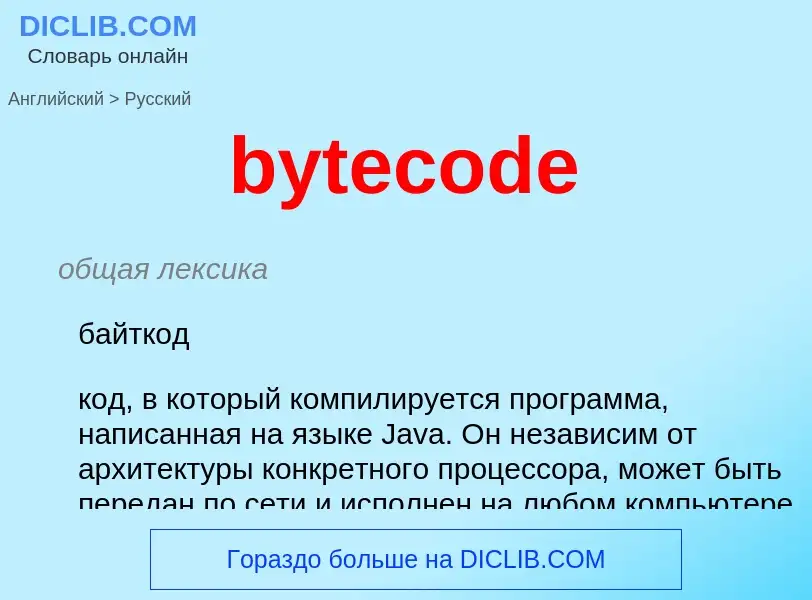Tradução e análise de palavras por inteligência artificial ChatGPT
Nesta página você pode obter uma análise detalhada de uma palavra ou frase, produzida usando a melhor tecnologia de inteligência artificial até o momento:
- como a palavra é usada
- frequência de uso
- é usado com mais frequência na fala oral ou escrita
- opções de tradução de palavras
- exemplos de uso (várias frases com tradução)
- etimologia
bytecode - tradução para russo
общая лексика
байткод
код, в который компилируется программа, написанная на языке Java. Он независим от архитектуры конкретного процессора, может быть передан по сети и исполнен на любом компьютере, где имеется интерпретатор виртуальной Java-машины
Смотрите также
общая лексика
промежуточный код
код, генерируемый во время первого прохода компилятора. На стадии кодогенерации из него легче получить объектный код для заданной целевой машины
Смотрите также
Definição
Wikipédia
Bytecode (also called portable code or p-code) is a form of instruction set designed for efficient execution by a software interpreter. Unlike human-readable source code, bytecodes are compact numeric codes, constants, and references (normally numeric addresses) that encode the result of compiler parsing and performing semantic analysis of things like type, scope, and nesting depths of program objects.
The name bytecode stems from instruction sets that have one-byte opcodes followed by optional parameters. Intermediate representations such as bytecode may be output by programming language implementations to ease interpretation, or it may be used to reduce hardware and operating system dependence by allowing the same code to run cross-platform, on different devices. Bytecode may often be either directly executed on a virtual machine (a p-code machine, i.e., interpreter), or it may be further compiled into machine code for better performance.
Since bytecode instructions are processed by software, they may be arbitrarily complex, but are nonetheless often akin to traditional hardware instructions: virtual stack machines are the most common, but virtual register machines have been built also. Different parts may often be stored in separate files, similar to object modules, but dynamically loaded during execution.

